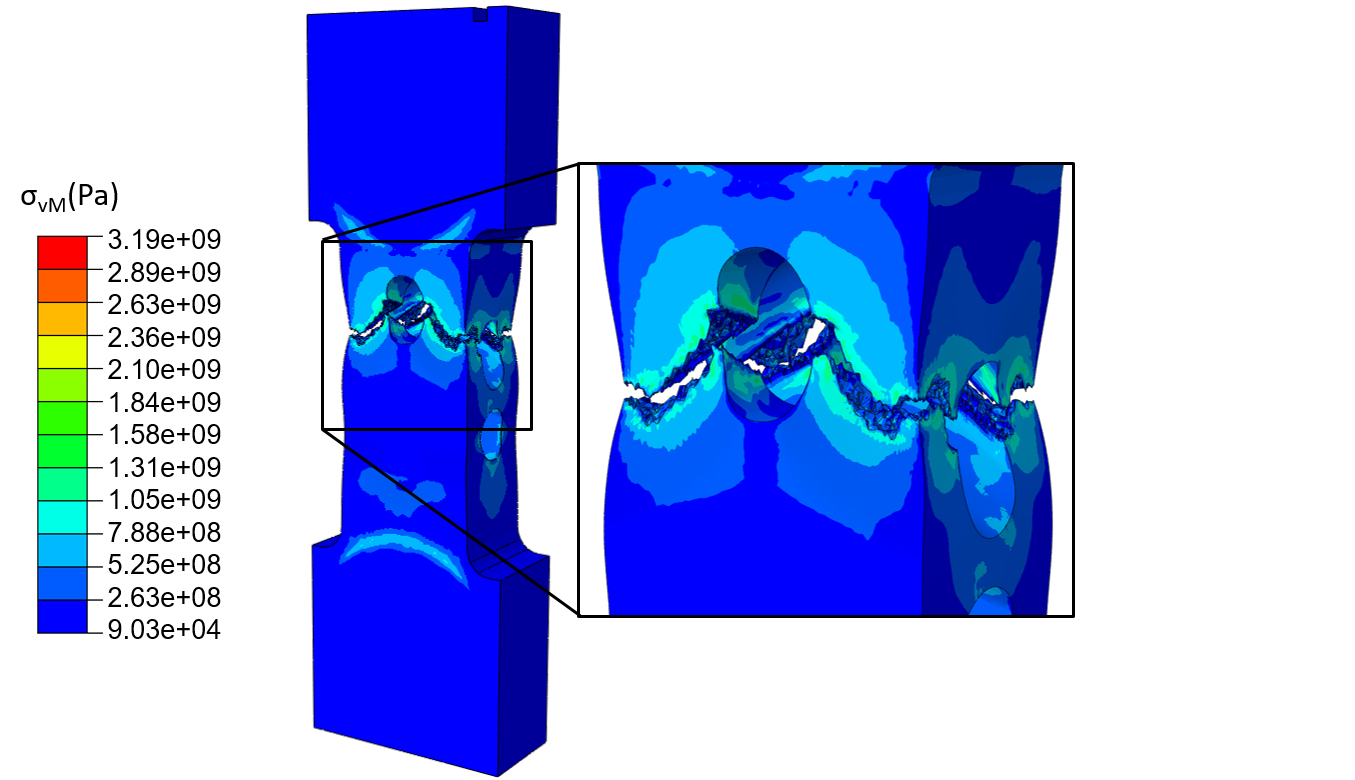A recent article in the International Journal of Fracture details the results and experience of a class’ participation in the Third Sandia Fracture Challenge (SFC3). In the spring semester of 2017, 20 University of Utah graduate students who were enrolled in a course on Fatigue and Fracture Mechanics (offered by Prof. Ashley Spear) participated in the Challenge, in which all participants were tasked with predicting ductile fracture in a 3D-printed stainless steel specimen geometry. The participants were provided with data from Sandia National Labs to help calibrate their models and were asked to provide local and global measures from their simulations. The students from the class were divided into teams, each using one of three fracture-simulation methods: 1) XFEM, 2) element deletion, 3) adaptive remeshing. Out of 21 teams from around the world who participated in the SFC3, three of the seven teams from Prof. Spear’s class ranked among the top five based on either global force-displacement or local strain predictions.
Click here to read more about the class’ experience and prediction results.
A lead article describing the results from all 21 participating teams is provided in a separate article, which can be accessed here.



